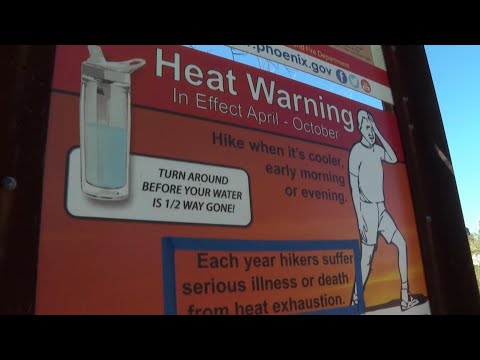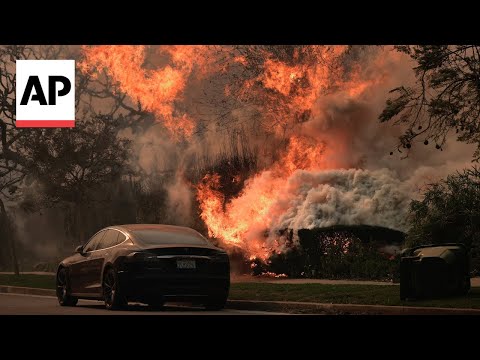(18 Jun 2024)
RESTRICTION SUMMARY:
ASSOCIATED PRESS
ARCHIVE: College Station, Texas – 7 June 2024
1. Various people on the walkway use an umbrella to shade off the sun
2. Close of squirrel under a shade
ASSOCIATED PRESS
Ann Arbor, Michigan – 17 June 2024
3. SOUNDBITE (English) Jeff Masters, meteorologist for Yale Climate Connections:
"A heat wave is defined by three things. One: How intense the heat is. Two: how long lasting it is. And three: The location. Now, some locations may not see a heat wave if it gets up to 90 degrees. For instance, you know, down in Texas, 90 is no big deal. But up in Michigan, where I live, 90 degrees is considered a heat wave because the population is just not conditioned to that sort of heat."
ASSOCIATED PRESS
ARCHIVE: College Station, Texas – 7 June 2024
4. Various weather stations at the Texas Center for Climate Studies, College Station, Texas
ASSOCIATED PRESS
Ann Arbor, Michigan – 17 June 2024
5. SOUNDBITE (English) Jeff Masters, meteorologist for Yale Climate Connections:
"So when you do get a heat wave, what it does to the atmosphere is it makes the air expand. So when the air expands, it creates a dome, which is why you call it a heat dome when you happen to have a heat wave. So there’s a big area of high pressure that’s bulged outwards, forming a dome. That’s all that means when you’re calling it a heat dome. It’s the heat wave. By, you know, any definition you want to give."
ASSOCIATED PRESS
ARCHIVE: Phoenix – 6 June 2024
6. Skyline from atop hiking trail on Camelback Mountain
7. Wide cityscape
8. Various of excessive heat warning sign
ASSOCIATED PRESS
Ann Arbor, Michigan – 17 June 2024
9. SOUNDBITE (English) Jeff Masters, meteorologist for Yale Climate Connections:
"This week’s heat dome is centered over Maine and New Brunswick, Canada. So that’s where the most intense departure from average is going to occur. They may see their hottest temperature on record for any month of the year in some locations there. But just because you’re not under the center of the dome doesn’t mean you’re not going to get a heat wave. It’s a large area that’s going to be experiencing much above average high pressure. So very intense heat wave conditions are going to extend over 1,000 miles away from the center of that heat dome, all the way here to the Midwest."
ASSOCIATED PRESS
Chicago – 17 June 2024
10. Temperature for Chicago shown on phone
11. Various of people using splash pad at Millennium Park
STORYLINE:
With much of the Midwest and the Northeast broiling — or about to broil — in extreme summer heat this week, meteorologists are talking about heat waves and heat domes.
Both mean it’s really hot — and people will hear those terms a lot more as the world heats up. What’s the difference? Here’s what to know:
WHAT’S A HEAT DOME?
It’s helpful to think of a heat dome as what’s happening in the atmosphere. A heat wave is how affects people on the ground, said Ken Kunkel, a research professor of atmospheric sciences at North Carolina State University.
When a high pressure system develops in the upper atmosphere, it causes the air below it to sink and compress. That raises temperatures in the lower atmosphere.
Because hot air expands, it creates a dome that bulges out.
The boundaries of this week’s heat dome are not well-defined, Kunkel said, but the National Weather Service has said that the most extreme heat is expected in the Ohio Valley and the Northeast.
The eastern heat dome follows an earlier-than-usual one this month in the Southwest. Last year, there were 645 heat-related deaths in Phoenix.
Find out more about AP Archive: http://www.aparchive.com/HowWeWork
Twitter: https://twitter.com/AP_Archive
Facebook: https://www.facebook.com/APArchives
Instagram: https://www.instagram.com/APNews/
You can license this story through AP Archive: http://www.aparchive.com/metadata/youtube/4bc92ef898af46a1968324dee7195428





